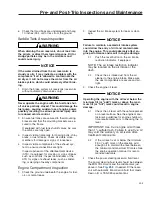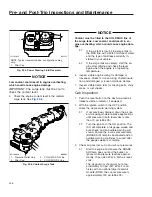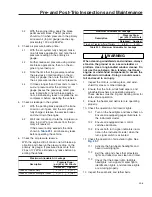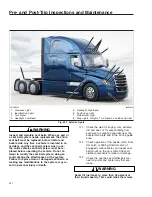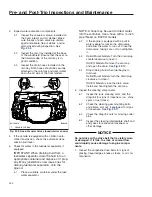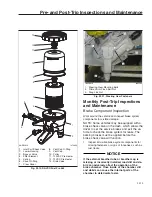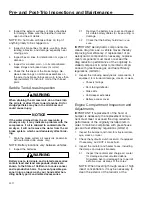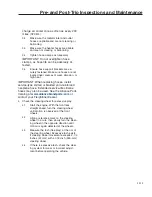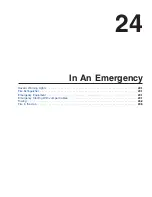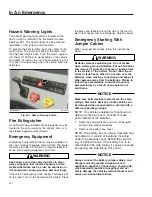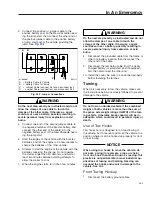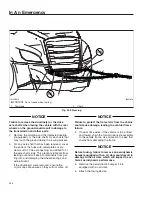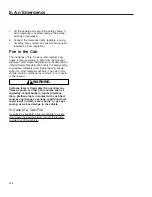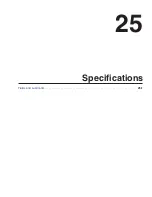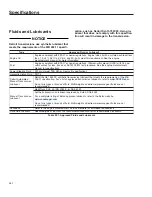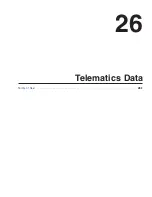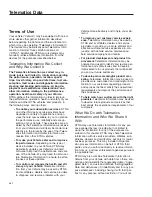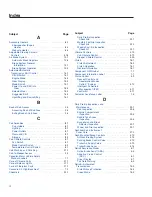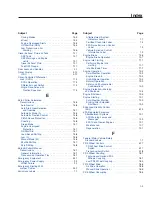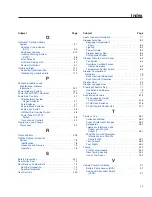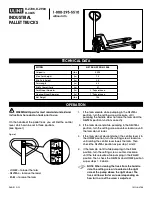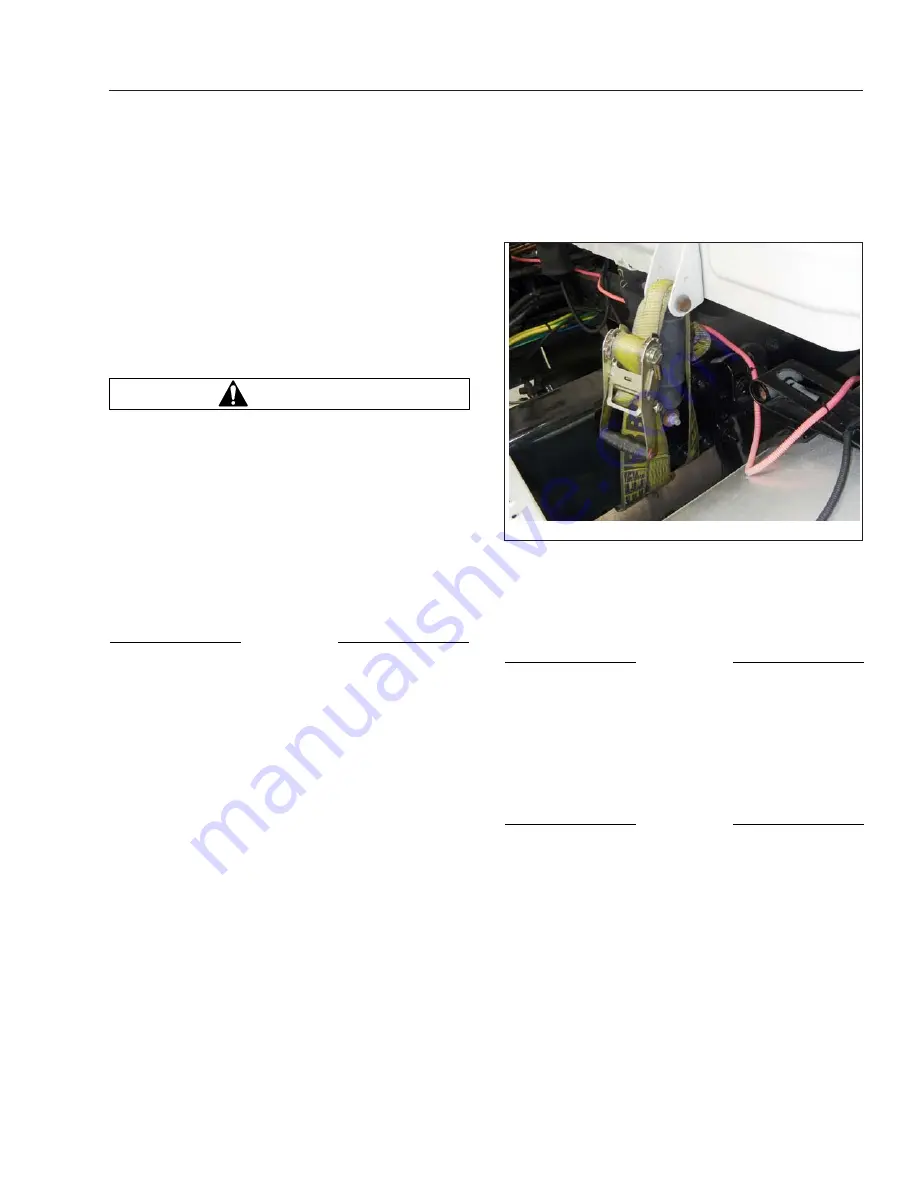
NOTE: Due to the many variables that exist in
towing, positioning the lifting and towing device
is the sole responsibility of the towing-vehicle
operator.
7.
Lift the vehicle and secure the safety chains. If
extra towing clearance is needed, remove the
front wheels.
8.
Connect the clearance lights, taillights, and sig-
nal lights. Connect any special towing lights re-
quired by local regulations.
WARNING
Failure to chock the tires or connect the tow
truck’s air brake system before releasing the
spring parking brakes could allow the disabled
vehicle to suddenly roll. This could cause prop-
erty damage or personal injury.
9.
Chock the tires on the disabled vehicle and con-
nect the towing vehicle’s air brake system to the
vehicle being towed. Then, release the spring
parking brakes and remove the chocks.
Rear Towing Hookup
NOTICE
Using a rear towing hookup on a vehicle
equipped with a roof fairing could cause damage
to the cab structure.
If reverse towing at speeds above 45 mph (70
kph) is necessary, hold down the cab with ten-
sion straps looped over the cab shocks and
under the frame rails. Failure to do so could
allow the wind load to lift the cab unexpectedly,
resulting in damage to the air springs and other
components.
1.
If the vehicle is equipped with cab air suspen-
sion, and reverse towing at speeds above 45
mph (70 kph) is necessary, hold down the cab as
follows:
1.1
Drain the air from the cab air springs.
1.2
Loop a 2-inch (5-cm) ratchet-style tension
strap (rated 2000 lb [900 kg] minimum
work load) over the top of the cab shock
and under the frame rail. See
Tighten the strap for a snug fit. If the cab
is equipped with two or more shocks, re-
strain the aftmost shock on each side of
the vehicle.
2.
Place the front tires straight forward and secure
the steering wheel in this position.
3.
Disconnect the battery ground cables.
NOTICE
Failure to protect the frame rails from the chains
could cause damage, leading to eventual frame
failure.
4.
On dual drive axles, using protection to keep the
chains from damaging the vehicle frame, chain
the forward-rear drive axle to the frame.
NOTICE
Before towing, failure to remove an aerodynamic
bumper equipped with an air dam could result in
damage to the air dam, which will impact the ve-
hicle’s aerodynamic performance.
5.
Remove the aerodynamic bumper if it is
equipped with an air dam.
6.
Attach the towing device.
NOTE: Due to the many variables that exist in
towing, positioning the lifting and towing device
is the sole responsibility of the towing-vehicle
operator.
05/13/2014
f602527
Fig. 24.4, Tension Strap Installed to Hold Down the Cab
In An Emergency
24.4
Summary of Contents for NEW CASCADIA 2016
Page 1: ... NEW CASCADIA Driver s Manual Part Number STI 500 Publication Number STI 500 8 ...
Page 5: ......
Page 11: ......
Page 38: ...f611444 10 31 2016 Fig 3 23 Sample Alert Messages Instruments 3 20 ...
Page 39: ......
Page 93: ......
Page 94: ...8 Cab and Sleeper Features Windows 8 1 Mirrors 8 1 Cab Amenities 8 1 Sleeper Amenities 8 2 ...
Page 99: ......
Page 125: ......
Page 134: ...14 Steering System Power Steering System 14 1 ...
Page 145: ......
Page 146: ...16 Manual Transmissions and Clutch Eaton Fuller Manual Transmissions 16 1 Clutch 16 1 ...
Page 149: ......
Page 150: ...17 Drive Axles Interaxle Lock Tandem Axles 17 1 Driver Controlled Differential Lock DCDL 17 2 ...
Page 164: ...19 Trailer Couplings Holland Trailer Coupling 19 1 ...
Page 177: ......
Page 191: ......
Page 198: ...25 Specifications Fluids and Lubricants 25 1 ...

